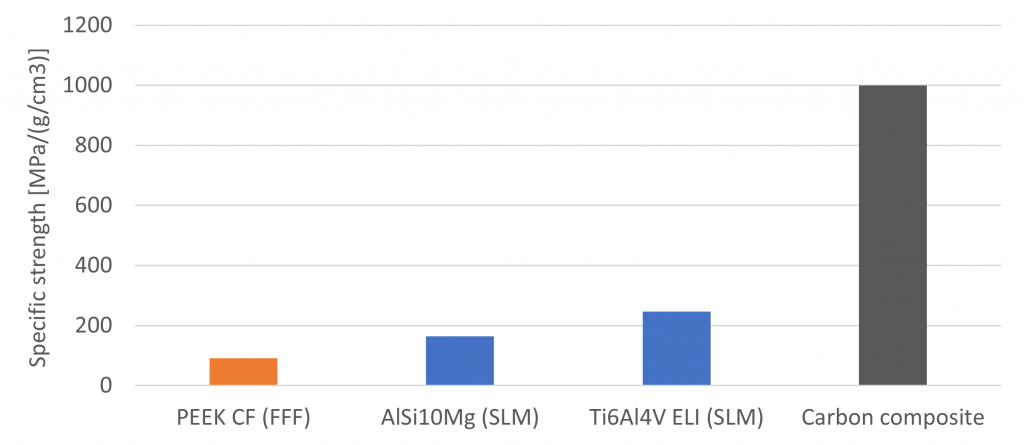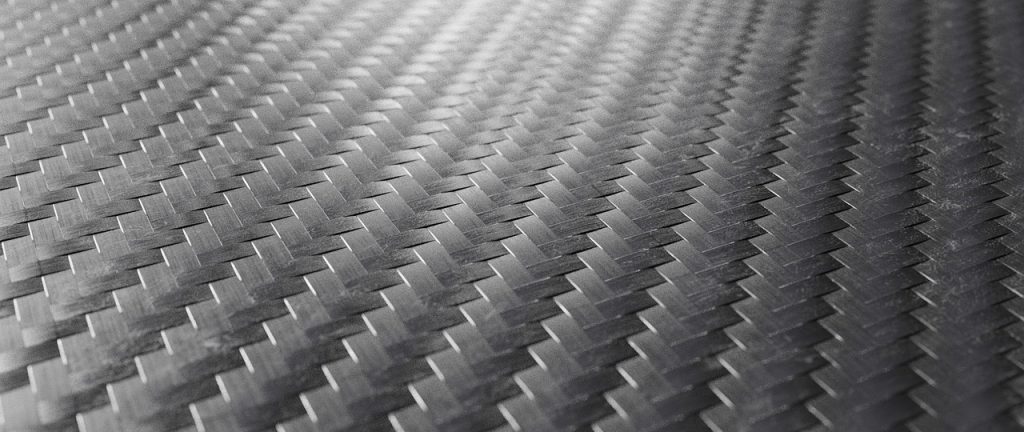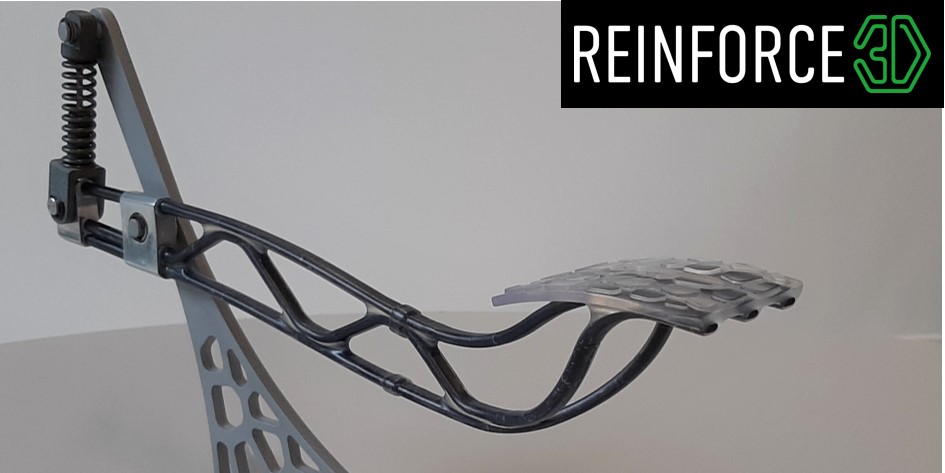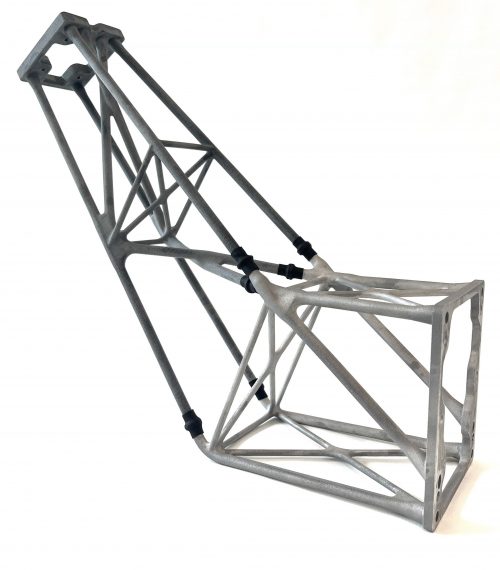By definition, reinforcement refers to the strengthening of an object or substance with additional material. Reinforcement materials typically add mechanical performance to a part, making it harder, stronger, and stiffer than in its original form.
Naturally, reinforcement is vital for a wide variety of engineering and manufacturing applications, particularly those where structural integrity is paramount. Common reinforced materials include concrete and other composite materials like fibre-reinforced polymers (FRP). One reinforcing material currently capturing the imagination of engineers is carbon fibre, which has been deployed for applications ranging from reinforced plastics used in the aerospace industry to improving the flexural strength of concrete installed in buildings and other construction projects.
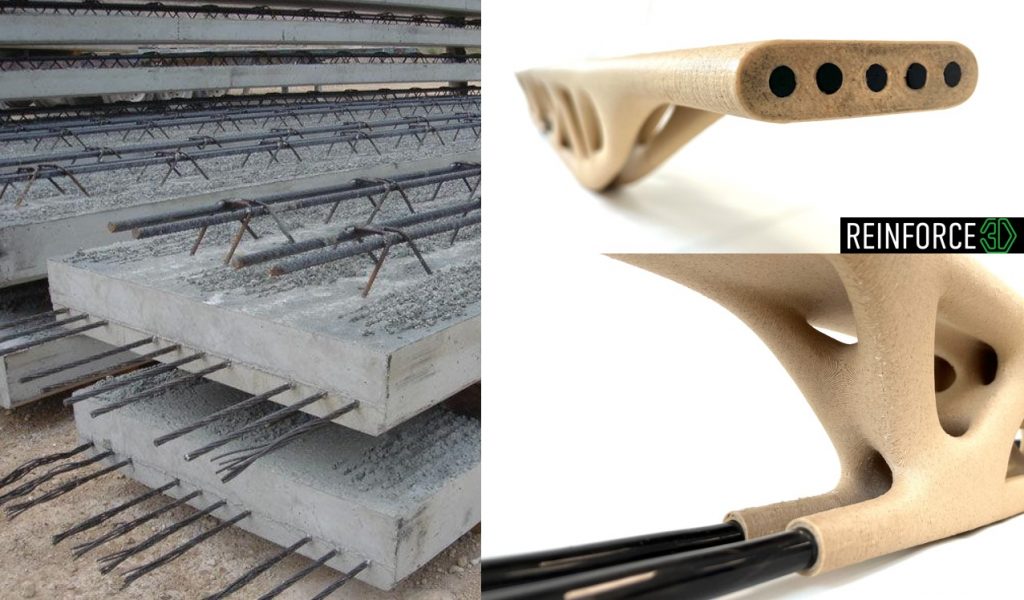
While the advantageous properties of fibre-reinforced materials have been realised by a variety of manufacturing methods for composite materials, the 3D printing sector has not yet developed an equivalent to the reinforcement that conventionally manufactured reinforced materials provide. A growing number of industrial sectors and applications are demanding materials capable of providing ultra-high mechanical and lightweight performance. In the aerospace and automotive sectors, for instance, the weight of a part has a significant impact on vehicle autonomy, fuel consumption and the related costs and emissions of greenhouse gases like carbon dioxide (CO2). To introduce the benefits of additive manufacturing technologies in terms of enabling the manufacturing of highly complex and optimised structures to these industries, the ability to process ultra-high performance materials is critical.
A new approach to reinforcement
However, despite recent breakthroughs in 3D printing of composite materials, such as the ability to use chopped carbon fibre as a reinforcement for polymers and the revolutionary development of directly printing continuous fibres, a gap remains within the 3D printing industry for a truly ground-breaking approach to fibre reinforcement.
Reinforce 3D is seeking to fill that gap with the development and commercialization of its patented Continuous Fibre Injection Process (CFIP) technology. While existing Continuous Fibre Reinforced Additive Manufacturing (CFRAM) technologies are based on reinforcing a part during the 3D printing process, CFIP takes a different approach: Reinforcing the part after it has been 3D printed. Going a step further than existing carbon fibre 3D printers, CFIP is the first post-process technology for reinforcing parts with continuous fibres.
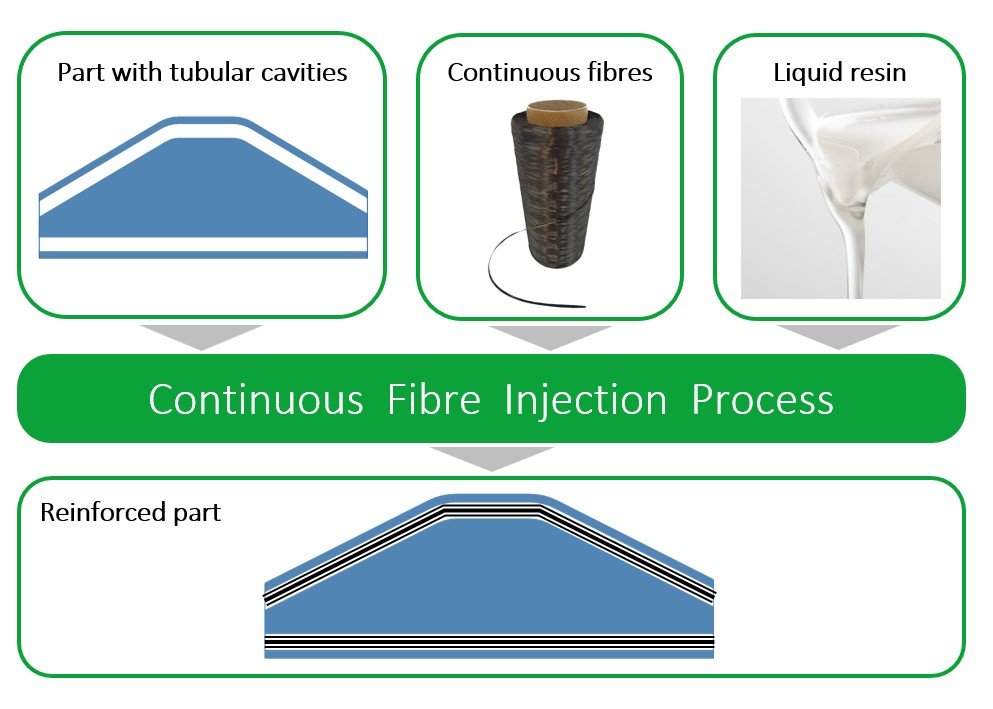
The technology works by injecting continuous fibres simultaneously with liquid resin inside tubular cavities within a 3D printed part. Since the resin is injected at the same time as the fibres, the tubular cavities are lubricated to facilitate the advancement of the fibres during the process. During the injection stage, pressure is applied on the resin to produce drag forces on the fibres. In addition, a new pushable and flexible fibre format has been specifically developed for the process, which is another key aspect of the technology. The part is then cured so that the resin, once solidified, acts as a mechanical interface between the fibres and the part material.
Significantly, CFIP also enables different parts to be integrally joined by providing fibre continuity between them, achieving an ultra-high joining performance for large, multi-material and multi-process structures. This facilitates the use of the most efficient material and manufacturing technology in each zone of the structure according to not only its mechanical requirements, but also its cost and production targets.
Offering several disruptive advantages, CFIP enables the placing of fibres in all directions and between printed layers, following complex trajectories that can be freely designed. This allows the fibres to be aligned in the most efficient directions to enable the manufacturing of highly optimised lightweight structures with improved mechanical performance.
CFIP is capable of reinforcing any part or material manufactured by existing 3D printing technologies, including plastics, metals and ceramics. While other CFRAM technologies are largely limited to plastics, CFIP can reinforce 3D printed parts with any type of continuous fibres, including carbon, glass, aramid and natural fibres. One notable example is the technology’s ability to reinforce a 3D printed titanium or aluminium parts with continuous carbon fibres, a feat that until now has been unachievable.
Disrupting composite reinforcement
Aside from the additive manufacturing sector, CFIP addresses the wider composites market as a new mouldless technology for reinforcing and integrally joining parts made by any manufacturing technology, ranging from extrusion or machining to traditional composite processing methods. Specifically, the technology will benefit numerous applications within the aerospace, automotive, sporting goods, health and construction sectors.
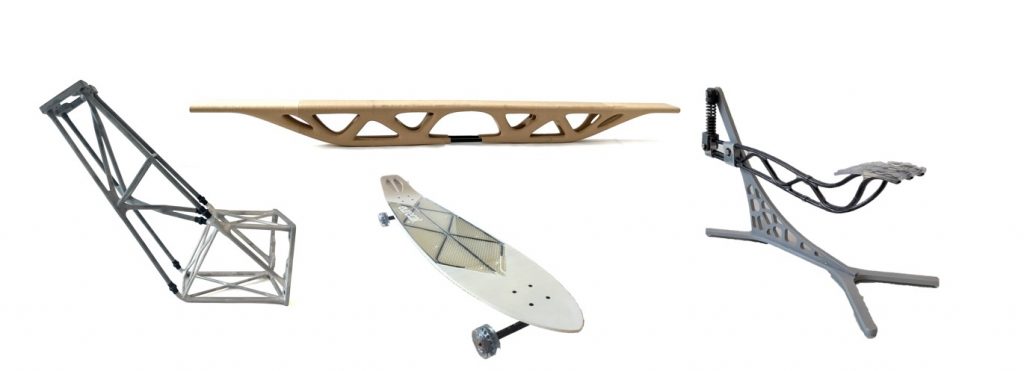
A wide variety of materials can be processed nowadays by the different existing AM technologies. E.g., high performance polymers such as PEEK can be manufactured by the Fused FilamentFabrication (FFF) technology, and aluminum or titanium alloys can be processed by the Selective Laser Melting (SLM) technology. But everyday more sectors and applications demand materials ableto provide ultra-high mechanical and lightweighting performance. E.g., in aerospace or automotivesectors, the weight has an important impact on the vehicle autonomy, fuel consumption and therelated costs and emissions of Green House Gases (GHG). In other sectors such as sporting goods(e.g., in applications such as bike components or tennis rackets), the weight of the product is one ofthe main characteristics valued by the consumer.
Figure below shows the specific strength (i.e., the strength divided by the density) of different highperformance AM materials: PEEK reinforced with short carbon fibers and manufactured by FFF, andaluminum and titanium alloys manufactured by SLM. It also shows the specific strength of acontinuous carbon fiber reinforced composite. It is observed how the specific strength of a carboncomposite is between 4 and 10 times higher than the other materials , which at the end meansthat the carbon composite can reduce by 4 to 10 times the weight of a structure when compared tothe other materials.
For this reason, to introduce in such sectors and applications the benefits of AM technologies interms of enabling the manufacturing highly complex and optimized structures, they also need to beable to process ultra-high-performance materials and, more specifically, continuous fiber reinforcedcomposites.
